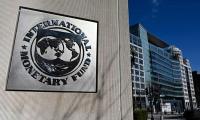After the electricity tariff, the gas tariff is poised to be enhanced as well. The average tariff will likely increase by 50 per cent.
There is a point of view that rich consumers living in posh areas should not be given pipeline gas, whatever the tariff may be, and should be supplied LPG or LPG equivalent gas tariff. Not only is the gas tariff going to be high, there will also most probably be gas supply issues, as happens in the winter usually.
There are three main uses of domestic gas: cooking; water heating; space heating. The most sacrosanct use is cooking which a majority of people demand should be given priority in gas supply allocations. This allocation is actually done by the gas companies, regulators and the government. The other two uses do not have such moral sanctity. In fact, per some people, the other two uses are wastage and the gas used in those should rather be diverted to industrial uses which would aid the economy.
For heating, the affluent classes have a choice of using inverter ACs. Most people have started using those, especially those with solar PV on their roof. Heating through inverter ACs – and thereby via electricity – has two advantages: it would increase electricity utilization in the winter when it goes down to very low levels increasing the capacity charges of electricity; and it would reduce gas consumption by reducing usage of gas geysers. Gas companies have also introduced a gas-saving device for increasing the thermal efficiency of gas geysers.
It has been several years now that solar geysers have been introduced in the Pakistan market. However, their use is still limited for a variety of reasons. It used to cost under Rs50, 000 per unit but its cost has doubled recently due to the depreciation of the rupee. Unfortunately, solar geysers are imported, almost totally. A solar geyser essentially consists of two parts – an insulated water storage tank and evacuated water double-walled tube of borosilicate glass. Additionally, there are optional electronic controls and a small water pump.
If solar geysers are installed in at least 50 per cent household roofs, a lot of gas can be saved. Such a step would help the country overall as well as individual consumers. The main problem here is the lack of supply chain and branding. If a customer wants to buy a solar geyser, s/he doesn’t know where to go and get a reliable product at the right price. After-sales support is another issue. It is believed that local manufacturing would be able to handle these issues. Earlier, gas companies used to take interest in such initiatives and were quite successful as well. With a change in management, these activities have almost been dropped.
Solar geysers can also be utilized to meet hot water requirements in many industries. The food, beverages and dairy industries have washing and cleaning requirements. Pakistan has a large textile industry that has dyeing and processing components. The textile processing industry has to usually install captive power units to utilize the exhaust heat for water heating purposes. Instead, such plants can install solar water heating panels the way our solar PV panels are installed. Space is a general limitation in Pakistan’s textile industry. New sites and locations should take care of this problem.
The global market of solar geysers exceeds $3 billion and is increasing at a rate of CAGR 5.0 per cent. China, India, Turkey, Mexico, South Africa, Morocco and several other countries are a major market. Solar geyser manufacturing is concentrated in China, India and South Africa but now even Morocco has started manufacturing solar geysers.
In China, 35 million households have installed solar geysers, although still a little than 10 per cent out of a total household number of 350 million. There are more than 1000 solar geyser manufacturers exporting 1-2 million units per year. Ninety per cent of the patents on solar geysers related subjects are owned by China. However, low quality and variability is a major issue in some of these products. Out of so many companies, one can find only 10-15 high quality and reliable companies, or so it is generally believed by trade circles. Pakistan being a highly price sensitive market, the combination of the two creates major quality and supply chain issues. In India, there are more than 100 manufacturers of solar geysers.
As mentioned above, small countries such as Morocco have established solar geyser manufacturing facilities. Recently, a plant has been installed in Morocco to manufacture 40,000 SWH which is to go up to 90,000 units per year. It will be a 100 per cent locally manufactured product. There are plans to export it as well.
Egypt, under the assistance of the United Nations Industrial Development Organization (UNIDO), launched a programme called SHIP – Solar Heating in Processing Industry – to popularize solar water heating in the process industry. Manufacturers have been readied to manufacture and supply solar water heating systems to three chosen sectors: textiles, chemicals and food. A concessionary financing scheme has also been introduced. It is being extended to other regional countries and is a good model to be adopted by Pakistan as well.
In local manufacturing, China is a problem and China is a solution as well. No one can compete with China due to their cheap labour, efficiency and subsidized pricing. However, with cooperation and JVs with Chinese companies, local manufacturing and exports can be developed. Pakistan has almost all the manufacturing know-how that is involved – steel fabrication, foaming, and glass industry. Companies making gas geysers or washing machines can go into this besides many other SMEs.
There can be two approaches to locally manufacture SWH in Pakistan. The first is to start with small plants of a capacity of 10-20,000 units .There is a scope for several parties to get into this. The second is that, under CPEC, a major project is launched to transfer Chinese plants and make a manufacturing hub for meeting local demand and exports as well. SMEDA can also fast track the process of popularizing the local manufacturing activities in this respect. It is a separate issue that SMEDA also needs institutional strengthening and modernization.
Local gas production is going down with no signs of new discoveries. LPG and LNG are expensive. In such a scenario, diversification is required. Besides that, some sensitivity should also be shown to the global targets of climate change. Solar geysers and biogas are two major ways to contribute to these objectives besides meeting the ever increasing demand of gas for cooking and non-cooking purposes.
A new line of manufacturing and exports can also thus be created at a time when we need it so badly. A government initiative would be required to create a credit line. There are many green credit lines available internationally that could be explored.
The writer is a former member
of the Energy Planning
Commission. He can be reached at: akhtarali1949@gmail.com
Approximately one in three women worldwide has experienced either physical and/or sexual intimate partner violence ...
Prime Minister Shehbaz Sharif has laid the foundation of a Daanish school in Islamabad’s Kuri Village
Ahfaz-ur-Rahman was also an Urdu poet of considerable reputation with his poems concerning a wide range of political...
In this picture taken on April 16, 2023, people throng a market area during shopping in Lahore. — AFPCare to cast...
A representational image of a transmission tower, also known as an electricity pylon. — AFP/FileLower electricity...
Pakistan's third Governor General Ghulam Muhammad. — National Portrait Gallery website/FileAs discussed in the...







